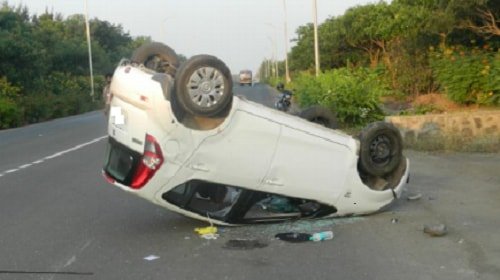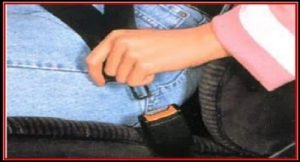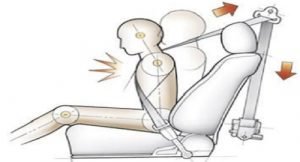
Contents
Car overturned
In India, the motor vehicle/car population is growing at a very fast rate than the economic and population growth. According to the World Health Organization (WHO), road traffic accidents are the 6th leading cause of death in India. Road traffic injuries place a huge burden on the health care sector in terms of hospital acute care and rehabilitation. Recently at one of our Construction sites, a high potential vehicle incident occurred when a car overturned with five employees in it. The group of employees was driving on plant roads between sites when the incident occurred. The investigation revealed that the driver had momentarily dozed off due to fatigue, thus veering off the road and striking the inclined portion of a bridge abutment, causing the car to flip and overturn. The incident resulted in only One Minor Medical Treatment Case and One First Aid Case. No severe injuries were suffered in this incident because all of the passengers in the vehicle were wearing seatbelts, in addition, they were driving within the safe speed limits (30 Km/Hr). This incident points out how critically important it is that all passengers in a vehicle wear a seat belt, including the rear seat passengers. Had any of these individuals not been wearing a seat belt the results of this accident could easily have been much worse. Let us learn some more facts about this device called a SEAT BELT. The seatbelt is no a new term for any of us, wearing a correctly adjusted seatbelt is one of the simplest ways of reducing the risk of serious injury or death in the event of a motor vehicle crash or overturning incident.
Remember to make it a rule that whether you are sitting in the front seat or the back seat of a car that everyone traveling in the vehicle must wear a seatbelt.
By following this simple rule many lives have been saved and serious injuries have been avoided. If you are in a motor vehicle crash, your seatbelt protects you by:

- Reducing the risk that you will be thrown out of a car/vehicle.
- Holds you in a position where you receive the most benefit from protective devices such as airbags.
- Reduces the risk that you will be thrown around in the cabin where you could injure yourself or other occupants.
- Reduces the likelihood of you hitting other objects within the vehicle such as the back, front seats or dashboard.
How do seatbelts work?

Seatbelts are designed to minimize injury by transferring the force of a crash away from more vulnerable parts of your body such as your stomach, and internal organs, to areas that are better able to provide resistance, to your pelvis and sternum. It keeps your body stationary during the collision/impact and does not let you strike other parts of the car’s interior. To do this effectively, however, your seatbelt must be adjusted correctly and not be damaged
Who is responsible for wearing seatbelts?
A driver of a motor vehicle is responsible for ensuring that each passenger is restrained in a seatbelt. If you are the driver, before you drive off to make sure:
- Your own seatbelt is properly adjusted and fastened.
- All passengers have their seatbelts properly adjusted and fastened.
Where can children sit in vehicles?
Having children in the front seat is a danger to the child. Sudden braking in a moving car can throw a child forward allowing them to strike the dashboard and windscreen resulting in serious injuries. It is recommended and in some countries required by law that children below the age of ten years must be securely fastened to the rear seat in a car seat. Special children’s car seats with safety belts are required to properly protect a child. This is because a standard seatbelt will not properly adjust to fit their smaller body structure thus allowing them to slip through the seatbelt during a collision or impact.

For children under the age of ten years, special seats are manufactured called car seats and for older children booster seats. They have special harnesses attached to the seats which protect the child’s body and properly restrain them as illustrated in this image.
Seatbelt myths
Some people believe they don’t need to wear seatbelts if they are pregnant or elderly. This is wrong! If a lady is pregnant, wearing a seatbelt will better protect her as well as her baby. It is equally or more important for older drivers to wear seatbelts as they may be physically weaker and more susceptible to injury. Some believe that seat belts are not necessary for low-speed driving. The fact is, in a frontal collision occurring at 30 mph, an unbelted person continues to move forward at 30 mph causing him/her to hit the windshield at approximately 30 mph. This force is the equivalent to a person falling from the top of a three-story building to the ground. Therefore it’s important to always wear a seatbelt and never take chances with your safety or that of your fellow passengers.




